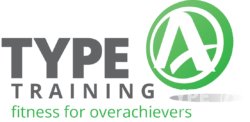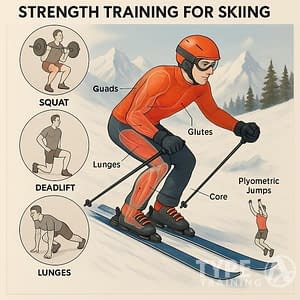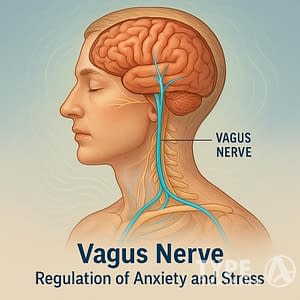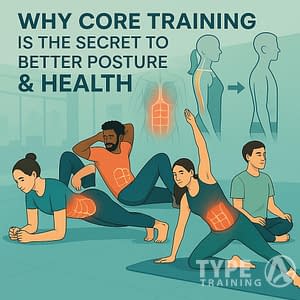When you want to build serious lower body strength, two exercises always pop up: the deadlift and the squat. Both are compound lifts, so they work several muscle groups at once and make your gym time count.
Deadlifts and squats both build strength and muscle, but they hit different areas. Deadlifts lean into the posterior chain—think back, glutes, and hamstrings—while squats put more focus on the quadriceps.

Wondering which exercise deserves more of your effort? Each has its own perks.
Popular posts:
Deadlifts place the weight in front of you and involve lifting it off the ground. This makes them great for developing hip hinge patterns and back strength.
Squats usually have the weight resting on your upper back, which changes the mechanics. They’re especially good for building leg power and jump height.
Your body type and goals should guide your pick. If you’ve got long legs, deadlifts might feel more natural. People with shorter legs often find squats easier to master.
But honestly, you don’t have to choose. Most experts say doing both gives you the most balanced results.
Key Takeaways
- Deadlifts target the posterior chain; squats mainly build quadriceps strength. Both work a bunch of muscle groups at once.
- Your body proportions and fitness goals should help you decide which to focus on.
- Most strength coaches suggest including both lifts for balanced gains and real-world strength.
Understanding Deadlift and Squat

Deadlifts and squats are foundational strength moves. They hit different muscle groups and bring their own benefits to the table.
When you do them right, both can seriously boost your strength and fitness.
What Is a Deadlift?
In a deadlift, you pick a barbell up from the ground to hip height. The movement mainly targets your posterior chain—the muscles running along your backside.
For a conventional deadlift, stand with feet about hip-width, grab the bar, and lift by pushing through your hips and knees. Keep your back straight and hands just outside your legs.
The deadlift works several muscle groups:
- Primary muscles: Hamstrings, glutes, lower back
- Secondary muscles: Upper back, traps, forearms, core
It’s a go-to move for building overall strength. Most folks can pull heavier weights on deadlifts than squats, making it a top pick for raw strength.
What Is a Squat?
In a squat, you lower yourself down by bending at the knees and hips, then stand back up. The classic version is the barbell back squat.
For a back squat, place the bar across your upper back and set your feet shoulder-width apart. Bend your knees and hips until your thighs are parallel (or lower), then push back up to standing.
Squats mainly hit:
- Primary muscles: Quadriceps, glutes
- Secondary muscles: Hamstrings, calves, core, lower back
Squats are a staple in most routines. They build leg strength, boost mobility, and help with athletic performance. If you want bigger legs and more functional strength, squats are tough to beat.
Key Differences Between Deadlift and Squat
The big difference is in how you move and what muscles take the brunt of the work. Deadlifts put the spotlight on the hips and lower back. Squats shine a light on the legs and glutes.
Form is another story. With deadlifts, you start from the ground and lift up, keeping your spine neutral. Squats start standing, then you drop down and rise back up.
Most people have a deadlift-to-squat ratio around 1:0.9. So, you might deadlift about 10% more than you squat, but this varies by body type and strengths.
Weight distribution also changes things. Deadlifts challenge your grip and back more, while squats test your core and knees. Depending on your goals, you might lean toward one, but honestly, mixing both often works best.
Muscle Groups Targeted
Deadlifts and squats both hit a bunch of muscle groups, but each emphasizes different parts of your lower body. Knowing what muscles get worked can help you pick the right move for your goals.
Primary Muscles Worked
Both deadlifts and squats train your lower body, just with a different focus. Squats mainly work your quadriceps (front of the thighs), which is why they’re so good for leg strength. Your glutes also get a big hit, especially if you squat deep.
Deadlifts are more about the posterior chain. They hammer your glutes and hamstrings harder than squats. The hamstrings fire up during the lift to extend your hips and get you upright.
How much each muscle works depends on your form. A deeper squat will fire up the glutes more, while a standard deadlift is all about the hamstrings.
Supporting Muscles Recruited
These lifts don’t just hit the main movers. During squats, your adductors (inner thighs) help stabilize your hips and knees. Your core, including the lower back, works to keep you upright.
Deadlifts bring in a lot of supporting muscles too, like your upper and lower back. The traps, rhomboids, and lats all help keep your spine neutral and shoulders steady.
Both movements demand solid core engagement. Your abs and obliques work hard to protect your spine and help transfer force between your upper and lower body.
Even your calves and ankle stabilizers chip in, especially during squats where you need more ankle mobility.
Movement Mechanics And Technique
Deadlifts and squats have pretty different movement patterns and technical demands. Understanding these differences can help you get more out of your training and keep injuries at bay.
Hip Hinge Versus Knee Flexion
The deadlift is mostly a hip-dominant move. You start by pushing your hips back, keeping your shins nearly vertical and your back flat.
Squats, though, are knee-dominant. You bend at both the knees and hips, keeping your chest up as you lower. Your knees move forward over your toes, which you don’t see in a deadlift.
This changes which muscles do most of the work. Deadlifts hit your posterior chain—hamstrings, glutes, and lower back—while squats target the quads more, but still work glutes and hamstrings.
Getting the hip hinge right in deadlifts takes practice. Keep tension in your hamstrings. For squats, focus on knee tracking and staying upright.
Range of Motion Considerations
Deadlifts usually have a shorter range of motion than squats. You start with the bar on the ground and lift until your hips are fully extended, moving through about 60-70 degrees of hip flexion.
Squats need more mobility. A deep squat can require up to 120 degrees of knee flexion and a lot of ankle bend. This greater range of motion makes squats especially good for building quad size and strength.
Your body shape affects how you move. Limb length, hip structure, and mobility matter for both lifts. Tall lifters sometimes struggle with deadlifts, since the bar has to travel farther.
To get the most from both moves:
- Deadlift: Work on hip mobility and hamstring flexibility
- Squat: Focus on ankle mobility and hip flexor length
Always put good form ahead of heavy weights, especially when you’re learning these lifts.
Comparing Performance and Conditioning Benefits
Deadlifts and squats both deliver real results for athletes and everyday lifters. They each bring different benefits for performance and conditioning, so it’s worth figuring out which fits your needs—or just doing both.
Athletic Performance
Deadlifts really shine when it comes to building up your posterior chain strength. When you deadlift, you’re working the hamstrings, glutes, and lower back—muscles that matter a ton for sprinting and jumping.
Squats, on the other hand, focus more on quad-dominant power. That deep knee bend in a squat helps build the stretch-shortening cycle, which is key for quick direction changes.
With deadlifts, you can usually move heavier weight than with squats. This often leads to bigger gains in raw strength.
Some coaches even say deadlift strength lines up closely with total athletic potential. For vertical jump improvements, studies show both lifts help, but squats might have a slight advantage for jumping higher.
Sports Performance Applications
Football players and sprinters usually lean toward deadlifts for that explosive first-step speed. The hip hinge in a deadlift mimics the power needed off the line or blocks.
Basketball and volleyball athletes often choose squats because they boost vertical jump ability. The squat’s movement is a lot like the loading phase before a jump.
Combat sports athletes get something from both lifts. Wrestlers use squat strength for level changes and lifts, while deadlifts help them keep strong posture under pressure.
Strength coaches will program both lifts but shift focus based on the sport. Football linemen may train squats more, while defensive backs might spend more time deadlifting.
Impact on Central Nervous System
Deadlifts tend to put more demand on your central nervous system (CNS) than squats. That’s why coaches usually keep deadlift sessions to once or twice a week.
After a heavy deadlift day, you might feel wiped out for up to 72 hours. The CNS fatigue just hits harder than with squats.
Squats still challenge your CNS, but you can usually handle them more often. Some programs even have you squatting two or three times a week, just at different intensities.
This difference comes from the total muscle mass worked and the static tension you need in a deadlift. Every muscle has to stay tight during a heavy pull.
To avoid burning out, it’s smart to alternate heavy deadlift days with lighter or moderate squat sessions. That way, you’re still training both patterns without frying your nervous system.
Strength And Power Development
Squats and deadlifts both build strength, but they don’t do it in the same way. Each one brings something different to your athletic development, and both have unique benefits for powerlifting and long-term skeletal health.
Powerlifting Implications
In powerlifting, you can’t skip squats or deadlifts—they’re both required lifts. Most lifters deadlift more than they squat, but not always. That usually comes down to body mechanics and which muscles you recruit best.
Deadlifts mainly test your hamstrings, glutes, and back, while squats hit your quads and core stability harder. You’ll notice squats tend to be programmed more often than deadlifts, probably because they’re more complex and can be trained at different intensities.
For Olympic lifting, deadlifts help you break the floor on snatches and cleans, but squats really dial in your receiving position for those lifts.
Bone Density And Long-Term Benefits
Both lifts are fantastic for improving bone density, which gets more important as you age. The pressure from these exercises stimulates bone growth and keeps your skeleton strong.
Squats keep steady tension on your spine and legs. That sustained load is great for building up bone density in your spine and femur.
Deadlifts deliver a huge pulling force for your whole posterior chain and also build up your grip. That helps you hang onto functional strength as you get older.
Studies show both lifts can boost lower body strength and jump performance about equally. The main difference is in how they load your body.
If you want the most benefit for your bones, mixing both lifts into your routine spreads the stress and helps maximize bone growth throughout your body.
Practical Considerations For Choosing Between Deadlift And Squat
Choosing between deadlifts and squats really comes down to your goals and situation. Both are solid, but personal factors can make one a better fit than the other at any given time.
Individual Goals And Limitations
Your goals should steer your pick between deadlifts and squats. For pure strength gains, both work, but they each have their specialty.
If you want to build bigger legs, squats might be your main move. They hit the quads directly and usually let you do more volume since recovery is a bit easier.
To build up your hamstrings, glutes, and lower back, deadlifts win out. That’s especially helpful for athletes who need strong hips.
Your body shape matters too. Taller folks with long legs and arms might find deadlifts more comfortable than deep squats. If your knees bother you, deadlifts might be less irritating, while people with back issues could prefer well-executed squats.
If you’ve got tight ankles or hips, squats can be tough to do right. Deadlift variations are often easier to adjust for these mobility issues.
Equipment And Gym Setup
Your gym setup can sway your choice. Squats need a rack or cage for safety, while you can deadlift almost anywhere with a barbell and a bit of floor space.
For home gyms, deadlifts are super practical. You just need a barbell and some plates—no spotter required. That’s a big plus if you’re short on space or equipment.
Squatting heavy is risky without a rack and safety pins. Don’t go for max squats if you can’t bail safely—seriously, it’s not worth the risk.
Think about your plates too. Standard 45 lb (20 kg) plates set the bar at the right height for deadlifts. If you only have smaller plates, you’ll have to prop the bar up to avoid awkward starts.
Injury Risk And Prevention
Both lifts can hurt you if you mess up the form. Deadlifts stress your lower back more, while squats put more pressure on your knees.
Your injury history should factor in. If you’ve had back problems, you might want to stick to sumo deadlifts or use a trap bar. Bad knees? Maybe avoid deep squats and focus more on deadlifts.
Form matters for both. Squats often go wrong when knees cave inward or you lean too far forward. Deadlift mistakes usually involve rounding your lower back or yanking the bar instead of pushing through your feet.
Start with lighter weights until you nail the movement. If you’re not sure, working with a coach can help spot issues before they turn into injuries.
Balance And Coordination
The coordination demands really differ between these exercises. Squats require significant balance because you have to stay upright with weight on your shoulders.
Deadlifts challenge your coordination in a different way. You need to keep a neutral spine while pushing through the floor.
This movement builds proprioception—your sense of where your body is—especially in your backside and legs. It’s a skill that doesn’t always come naturally, and it takes time to develop.
If you’re just starting out and working on balance skills, goblet squats are usually a safer bet than barbell squats. Holding the weight in front of you makes it easier to stay in the right position.
The trap bar deadlift kind of sits between traditional deadlifts and squats. Its design lets you keep a more upright torso, but you still get the benefits of the deadlift movement.
This makes it a solid choice for folks who are still figuring out their coordination. Think about where your balance is at before you pick a lift.
If standing on one leg feels tough, maybe hold off on heavy versions of these exercises for now. Build up some basic stability first—your body will thank you later.











